Whether your goal is to build muscle, lose fat, maintain your weight or just lose weight in general, accurately tracking your macros is key. One of the biggest IIFYM tips I can teach a beginner is how to weigh food!
You’d be surprised how different a serving measured in grams is compared to a serving measured with a measuring cup.
For example, take dry pancake mix. A true serving of Kodiak Cakes is 53 grams. The nutrition label estimates that to be about a 1/2 cup. The problem is the amount of dry pancake mix you pack in your measuring cup will be different every time. Meaning sometimes you are consuming more calories and others less.
This doesn’t seem like a big deal, but if you do this for every meal it adds up and could be the reason you aren’t hitting your goals.
Contrarily, 53 grams will be the same amount of pancake mix every time. 53 grams will always be 1 serving. I’ve had a half cup of kodiak cake mix weigh out to be 1 serving and I’ve also had it be as much as 1 1/2 servings other times. That’s a difference of 95 calories (1 g fat, 15 g carbs, 7 g protein).
Sure that may not make a big difference if you only do that once, BUT if you measure inaccurately several times a day you could be going over your calories by as much as 4 or 500 calories a day.
Bottom line: If you’re not using a food scale, you’re not hitting your macros.
If you want to be successful, invest in a food scale. They’re not very expensive, but they are so essential.
We love a simple digital food scale like the one I just linked from Amazon. It’s super cheap, but it measures in ounces & grams and has the “tare” function so it gets the job done. You definitely don’t have to break the bank on this purchase.
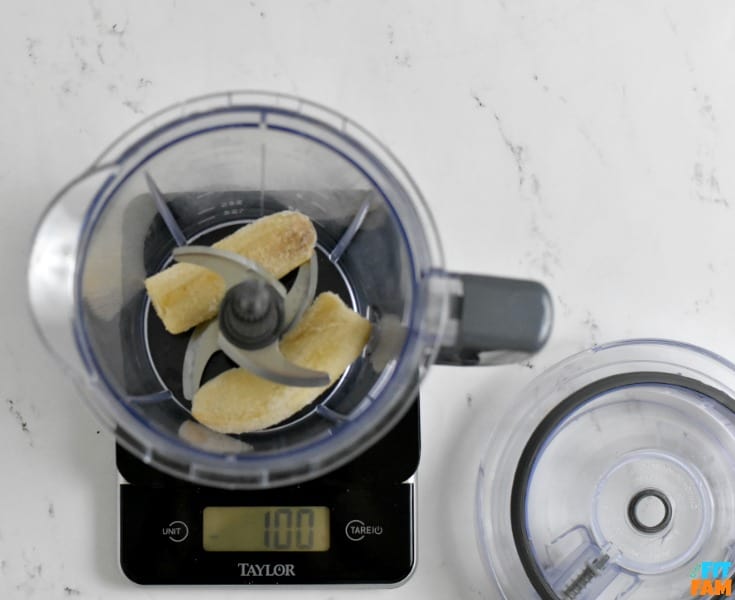
What types of food to weigh:
You want to weigh almost everything. This includes protein powder, pancake mix, flour, sugar, ketchup, rotisserie chicken, drumsticks, ribs, tortilla chips, cheese, cereal, fruit, etc.
The exception: you do not weigh liquids.
While most food scales do have a fluid ounce & mL function, I would say 99% of people in the IIFYM community do not use it.
The general consensus is that it is not accurate. Instead, just use a measuring cup that measures in Oz or a normal measuring cup if you know how to convert cups to ounces.
“Wet” food that you do weigh: ketchup, honey, any nut butter, sauces, dressings, basically if the serving size on the nutrition label is listed in grams, you should weigh it, if it’s listed in Oz or mL you should measure it.
Prepackaged foods: When it comes to prepackaged foods, it’s up to you.
There are a lot of differing opinions on this. I personally don’t like to be overly “strict” on my macro counting and will just trust the label on any prepackaged single serving foods.
However, I do know of a lot of people who have noticed discrepancies between the actual weight of food in the single serving package and what the nutrition facts say it should weigh.
Most notice that there is less than a full serving in the package. So, it’s up to you. I personally don’t think it’s something that you need to worry about UNLESS you are participating in a fitness competition of some sort where it is necessary to be extra strict.
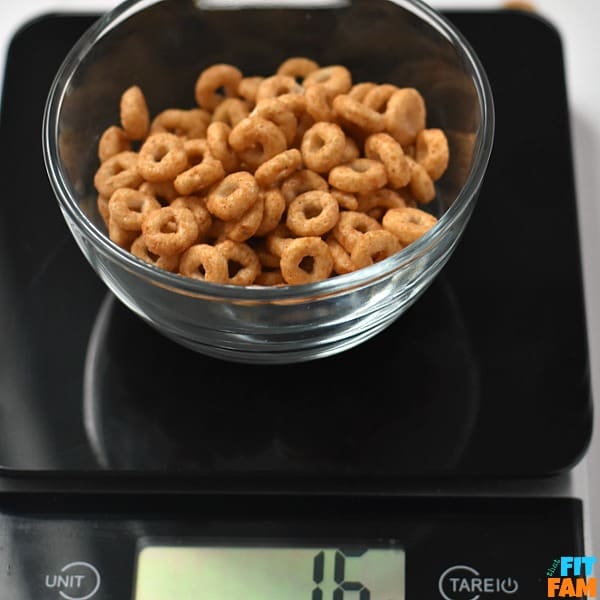
Do you weigh before or after cooking?
It is more accurate to weigh meats & veggies raw. However, it really just depends on how you’re logging your food.
We love using MyFitnessPal to track our macros. MyFitnessPal (and probably other tracking apps) have food entries for both raw and cooked foods.
So if you forgot to weigh your chicken before you cooked it, just make sure you’re logging the cooked weight as “cooked chicken.”
MyFitnessPal usually has specific entries for the way you cooked your food as well (steamed, grilled, etc.) so be sure to choose the right one.
Veggies are the same deal. Track them as raw if you can (preferably using USDA entries) or steamed if they were steamed before you weighed them, etc.
How to weigh food with bones:
Simple, weigh it before you eat it and then again after you’re done. Now subtract the weight of the bones from the original weight and log that (make sure to log this entry as fully cooked, not raw).
How to weigh fruit:
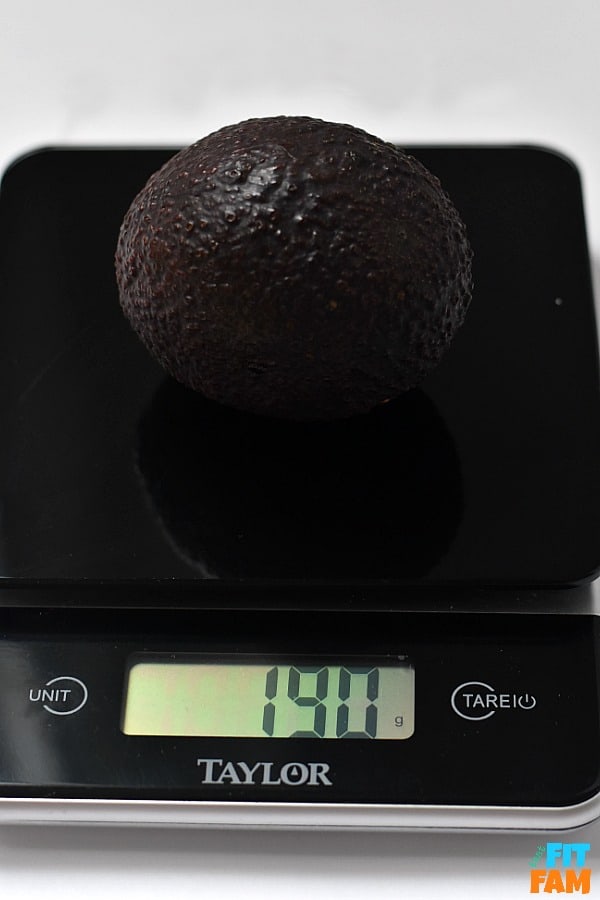
It’s really tempting to just log your fruit as 1 small banana or 1 avocado without actually weighing. BUT this is just not accurate at all.
When tracking macros you want to be as accurate as you can be. This means you need to weigh your fruit. If you don’t eat the core, pit, or peel don’t count that in your weight.
The easiest way to do this is to weigh your fruit as a whole, eat it and then weigh the portion you didn’t eat. Now subtract that from the original weight and you have the amount you did eat.
In MyFitnessPal, the most accurate entries for fruit are USDA entries.
What if I’m cooking for my family?
Okay, let’s start with something simple like rice.
You need to make 4 servings of rice. Using a food scale, weigh out 4 servings of rice (in grams) BEFORE you cook it. Next, cook it as you normally would. Weigh the cooked rice and divide that by 4. You now know how many grams are in a single serving of cooked rice so you can dish out the correct portion size for yourself.
But, not everything is as simple as rice.
It’s a little tricky to be super accurate when making large batches of food with multiple ingredients. The best case scenario is that you cook all ingredients separately and dish them out on your plate one by one. But, this isn’t always possible.
Let’s say you’re making something like Chili.
First, do what you did with the rice and weigh out all the ingredients for the recipe before they are cooked.
Now create a recipe in MyFitnessPal and add in all the ingredients. When your meal is done, weigh the entire thing as a whole. To do this just place a big empty container on your food scale, zero it out and then pour in your meal.
Let’s say it weighs 1678 grams. Now, instead of saying this recipe is 4 servings and then dividing 1678 by 4 to get 419.5 grams in 1 serving, what I like to do is edit my recipe in MyFitnessPal to have the same amount of servings as there are grams.
This sounds weird, but hear me out. If I say there are 1678 servings in the recipe, MyFitnessPal will then divide the entire calorie count by that amount.
Making each serving only 1 gram makes my life easier for tracking because now I can just put my empty bowl on the scale, zero it out, and fill it up until my eyes are satisfied with the amount of food.
Maybe I want 364 grams of food, maybe then I come back for seconds and have an additional 200 grams of food it doesn’t matter and I don’t have to do any math! All I do is go to the entry on MyFitnessPal and add in 364 grams of this recipe and then 200 grams of this recipe and they do the math for me. I promise this is easier!
Reverse weighing your food
Does anyone else eat things straight out of the container? I do!
I used to do this all the time with Brownie Batter Hummus. (We have our own version pictured below, but truthfully, Delighted By really nailed this recipe. It is sold at Whole Foods & Target I believe.)
In order to accurately track every random spoonful you eat, you need to reverse weigh your food.
This means put the container directly onto the food scale and zero it out by pressing the “tare” button.
Next, eat however many spoonfuls you’d like and watch your scale go into the negative. Just convert that negative number into a positive and you now know how much you ate. No more excuses for not tracking small bites and licks.
Benefits of weighing your food:
- Hit your macros and break through diet plateaus. (BIGGEST BENEFIT)
- Less dishes. You are not dirtying any measuring cups, etc when you weigh your food. I just pour directly into the bowl on the food scale until I hit the number of grams I’m aiming for. Same goes for shakes. I just put the blender directly onto the food scale, and add ingredients, zero-ing out the scale after every new ingredient.
- No variation when making the same recipe. Ever make a recipe and it turns out different every time? That’s usually due to human error when measuring. You won’t have that problem anymore.
Like I said initially, one of the biggest IIFYM tips I would give a beginner is to buy a food scale and learn how to track every bite of food. It sounds tedious, but it will make such a huge difference.
More posts with IIFYM tips that may be helpful:
25 Things I wish I knew before Counting Macros
Eating out while Tracking Macros
Be sure to subscribe & follow us on Instagram! We share IIFYM Tips as well as healthy recipes every week!
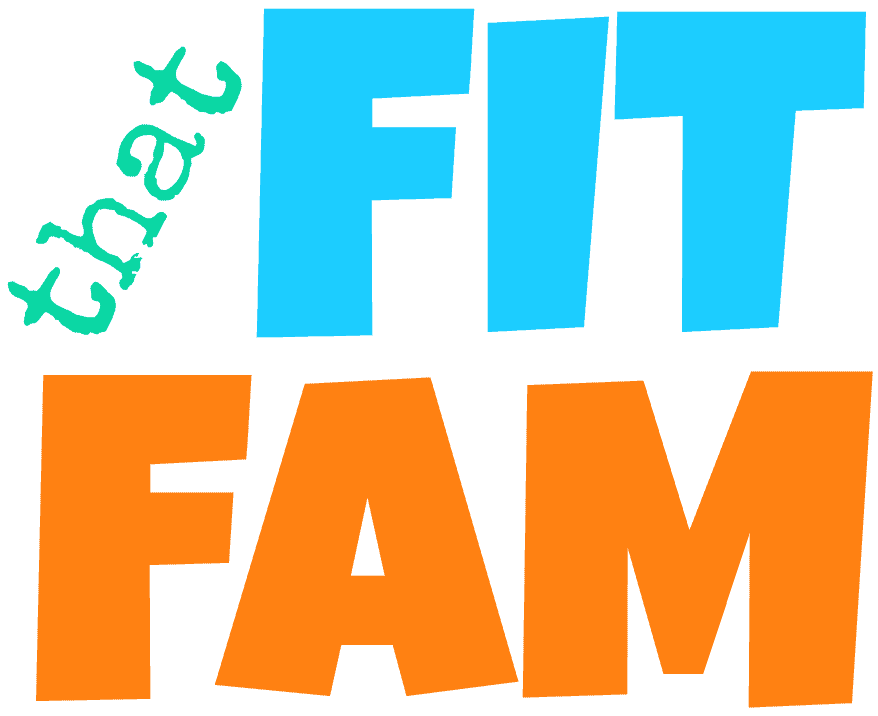
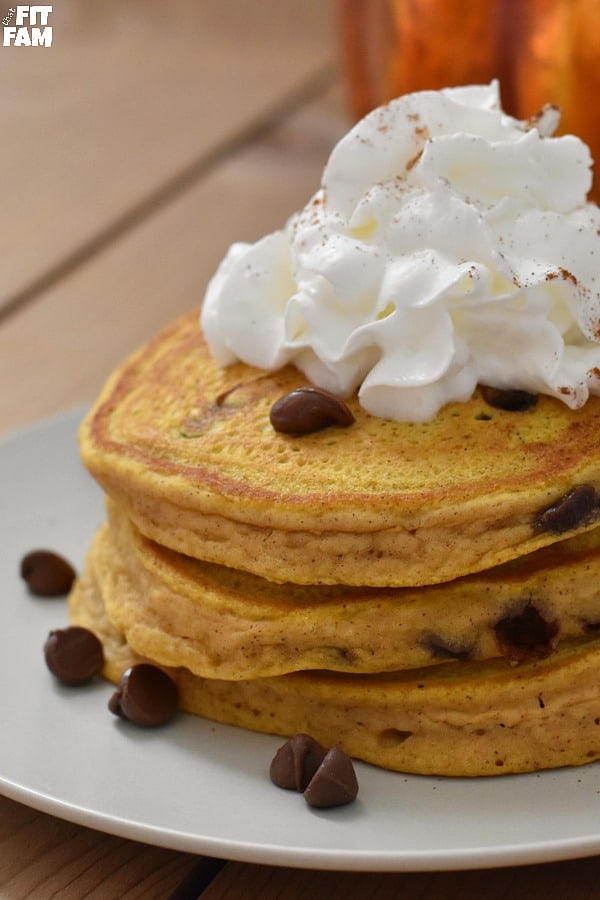
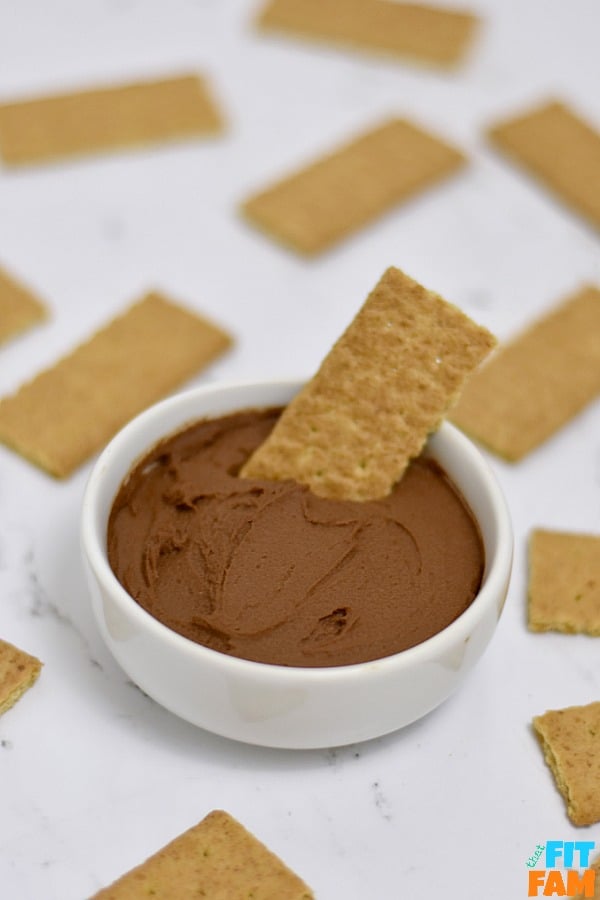
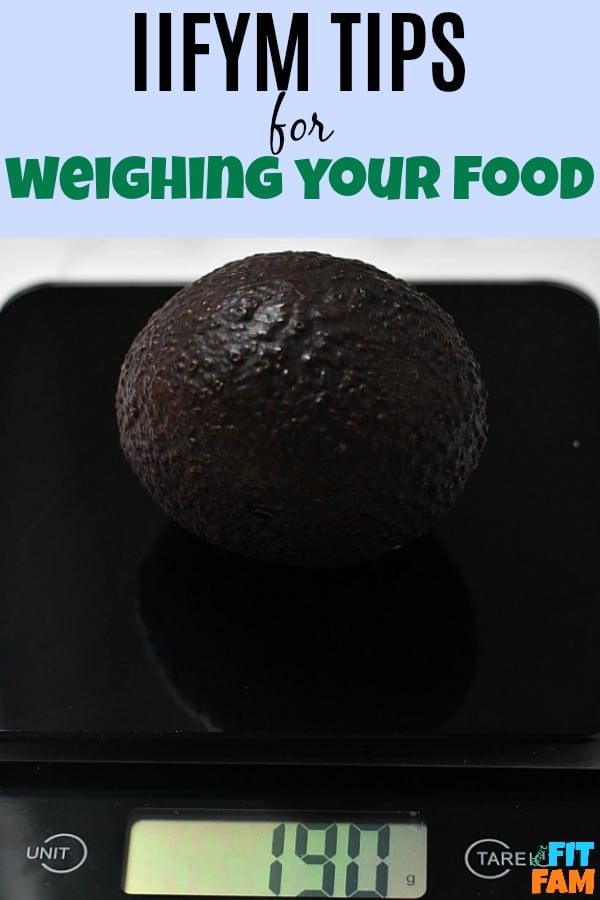

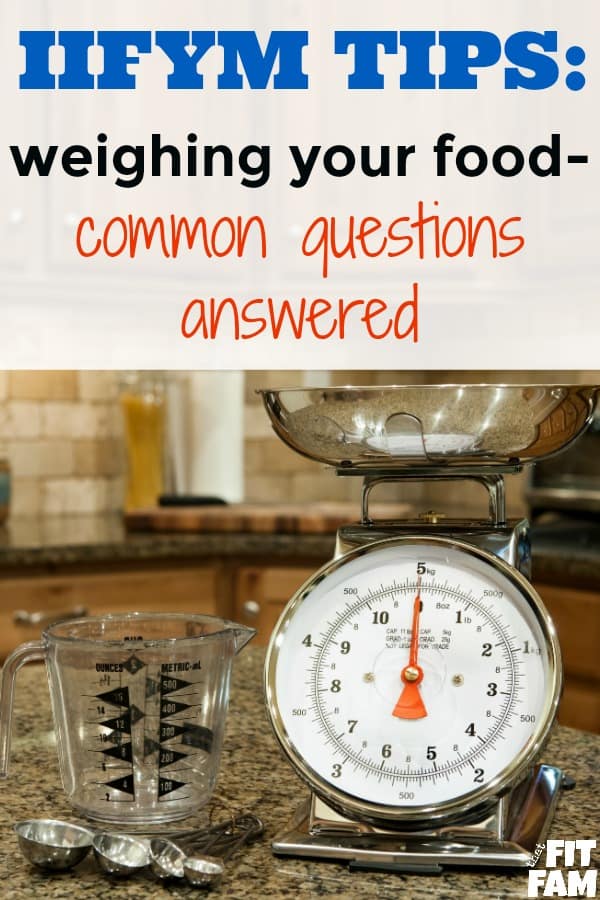
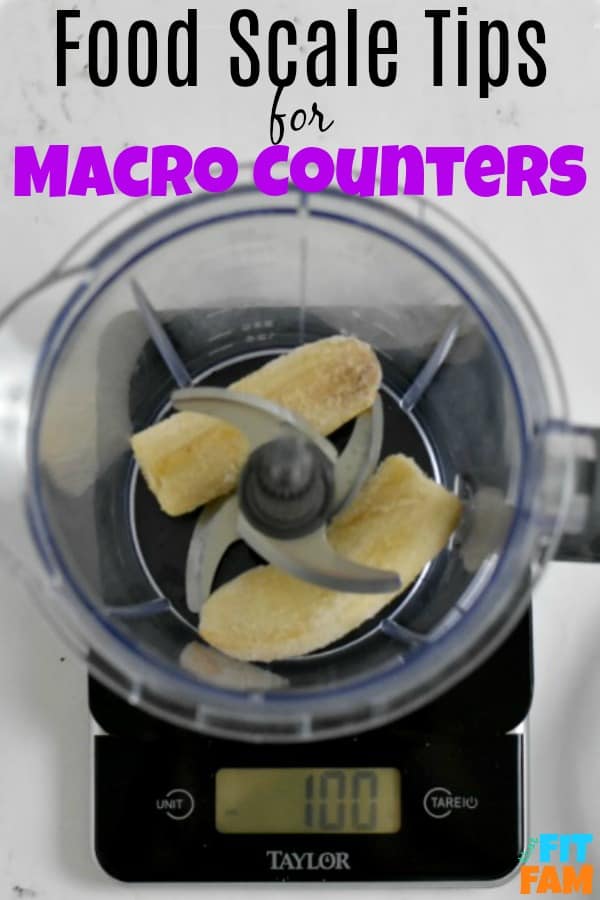
25 Tips for success with Macros - That Fit Fam
Monday 3rd of June 2019
[…] Don’t forget the food scale has a tare function, use it. (Read more here: food scale tips & tricks) […]
20 Macro Friendly Recipes - That Fit Fam
Sunday 12th of May 2019
[…] if the recipe was something like chili, that’s a little harder to adjust and harder to track accurately. Not impossible, just […]
Counting Macros for Beginners - That Fit Fam
Friday 10th of May 2019
[…] your food is actually not as inconvenient as it sounds, trust me. Here are some of our fave tips on weighing food that definitely make it easier. Want to eat straight out of the jar? We’ve got that covered & […]